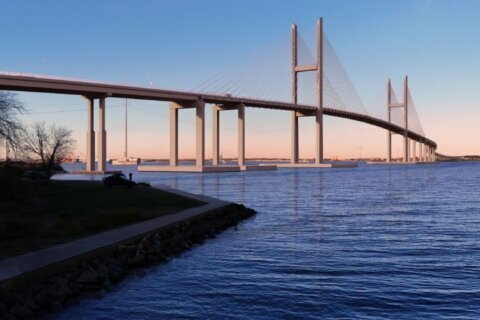WASHINGTON — With the last of the area’s largest school systems returning to class, and many people back from vacations, traffic on the Tuesday after Labor Day can feel particularly terrible.
But how well does perception match the reality of “Terrible Tuesday” traffic?
“I believe that so-called Terrible Tuesday is more an emotional kind of sense for the public because everything is kind of back to normal, officially, by that day,” said Transportation Planning Board Senior Engineer Wenjing Pu.
“But in terms of traffic,” he added, “actually, it’s not standing out in a lot of years.”
An analysis by the region’s Transportation Planning Board has found that traffic delays, overall, tend to spike significantly in September. But there were other days worse than the Tuesday after Labor Day, the analysis finds.
“It wasn’t the traffic nightmare, maybe, that everybody assumed it was,” said Ben Hampton, a planner with the Transportation Planning Board. “The other thing to realize is that oftentimes Wednesdays and Thursdays are worse travel days than Tuesday, anyway. So when we went back and looked at the 6 years of data, it was frequently the case that, actually, Wednesday or Thursday of that week after Labor Day was worse than the Tuesday itself.”
So does that mean that Labor Day week isn’t a bad traffic week — that it’s all in our heads? Not at all, Hampton says.
“It’s just that Tuesday isn’t the pinpoint focus of that increase in traffic,” he said.
What the numbers say
In recent years, the transition from August to September has been marked by an increase in morning traffic delays, with as much as 45 percent more cars hitting the road at the same time for trips to school and work.
The change shows less of a pattern in afternoons, according to regional traffic data used for the study. Morning traffic delays tend to ease somewhat in October, with a further drop in November.
Hampton said the decline probably has to do with “adaptation.” He said there’s a lot of pressure to arrive on time and be there every day that first month back to school or work after summer vacation.
“I think people start to relax a little bit heading into October and then especially November as we start getting closer to the Thanksgiving holiday,” Hampton said.
Avoiding delays
Ways to avoid the worst of the delays include leaving earlier or later than the main rush hour if possible, avoiding driving altogether by taking a train, bus or bike, or carpooling to zip by some traffic using high occupancy vehicle lanes.
“We know that’s not possible for everyone, but these are the kinds of mitigation and adaptation techniques that might help take the edge off of September,” Hampton said.
This year could have some different traffic patterns due to Metro track work as well, with 24/7 work on the Blue Line route at the Franconia-Springfield station through Sept. 11, and six weeks of work on the Virginia end of the Orange Line route beginning Sept. 15.







